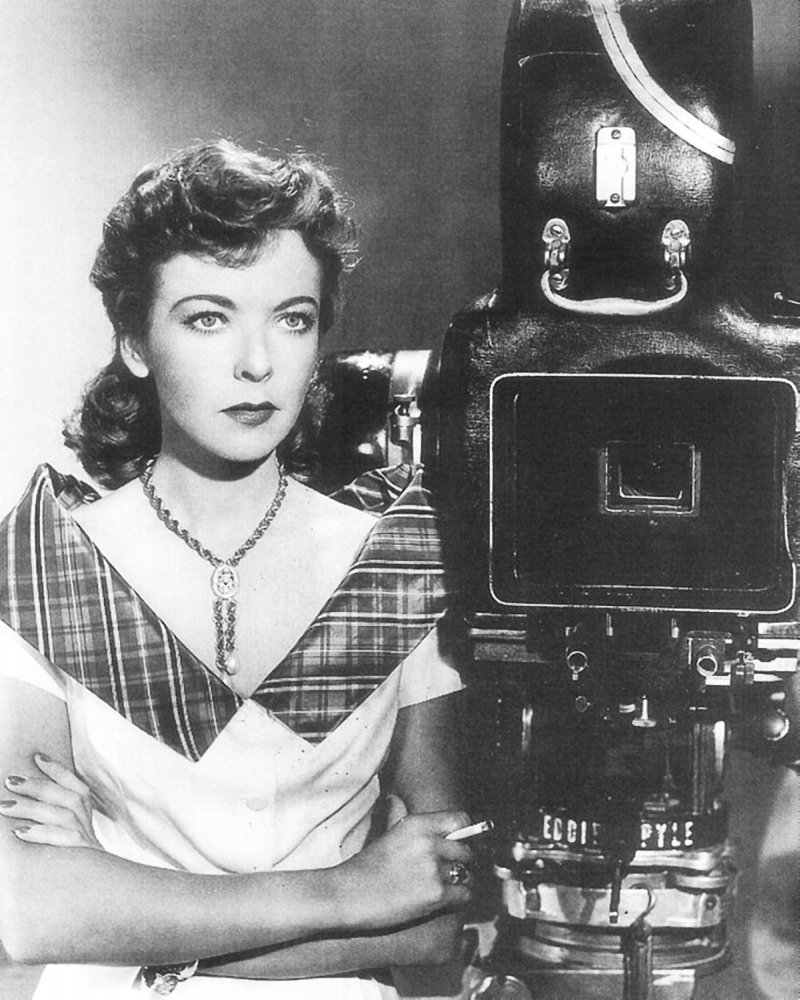As a writer, I am working on honing my craft. Even when I'm not actively writing, I'm studying whatever I'm reading and whatever I'm watching looking at how it was written and what I like about it. This constant studying is good for writers because it helps us when we go back to writing our own works or editing our own pieces or just trying to get started.
In my editing experience, writing classes, and just being friends with outer writers, the "sins" of writing have been shown to me multiple times. In fact, I have even committed many of them. However, often these sins are labeled and persecuted without explanation. In an effort to help writers grow, I will detail a list of the most common sins of writing and explain why each is "bad" and some tricks on how to avoid them and correct them.
Cliché:
 |
| http://www.thefoxisblack.com/2011/02/10/cliche/ Image by Cedric Villiain |
Cliché is probably the sin that is most rabbited on about. According to the Oxford American English Dictionary Cliché means: "a phrase or opinion that is overused and betrays a lack of original thought. a very predictable or unoriginal thing or person" Clichés exist for a reason and do serve a purpose, so do mosquitoes. That is to say that though the exist and serve a purpose, they are annoying. When using a cliché the writer tells the reader "I'm lazy and don't care about my writing" thus the sin. Clichés are over used phrases (colloquialisms), over used character types (stereotypes), and over used places (commonplace). Now when handled properly, clichés can be very effective, except stereotypes, those are often just plain rude. My quick tips for how to properly use colloquialisms is only let characters use them in character speech or in first person narration. By doing so, the writer is then turning them over to the character to use; however, use them sparingly: overuse creates a barrier between the reader and the text and often the reader tunes out because the language isn't engaging. Commonplace is great if the writer does not want to go into great detail about the location or item because it then requires the reader to fill in the blanks: main problem with commonplace is knowing when something is commonplace and when something isn't. In general, clichés are tough because they require a tight cultural understanding and do not allow for diversity of knowledge and culture.
Clichés often pop up in genre fiction narratives because of the heavy dependency on tropes in those types of fiction. Easy ways to avoid them are to subvert the tropes (which is almost becoming cliche at this point), and to create a new trope. Creating new tropes are difficult but are an excellent challenge to a writer. The easiest way to avoid cliché is to be true. Clichés are amalgamations of truths that are often unrealistic, imitate life to have truer writing. To imitate life though, a writer has to shun the cliché of agoraphobic and anti-social writers and at least be willing to observe people. Friends help a lot with this in the way that they are little test subjects that we as writers can observe their reactions to environmental stimuli.
Here are a few other blogs that outline clichés:
Cliche What? specifically outlines cliché narrative types in romance.
Purple Prose:
Learn from this bear. The story of this purple bear is purple prose. Admittedly it is quite blatantly purple prose. Purple prose is two things, being excessively
writerly and having thesaurus syndrome. As the image illustrates, purple prose takes a bear from sitting and watching fish jump in a stream to being that monstrosity of a sentence. Purple prose is a sin for one reason: its freaking annoying as hell. Purple prose causes the reader to skim the wordiness of expounding the qualities of a thesaurus ridden paragraph and often to stop reading because the writer didn't know when to stop. However, it isn't always as blatant as this purple bear would like you to believe. This blog entry is a perfect example of subtle purple prose:
http://durangotexas.blogspot.com/2012/08/i-bear-burden-of-excessive-purple-prose.html The writer of this post admits to being plagued by purple prose, and smartly makes fun of it, but it shines through in other areas. Purple prose is being indirect, it is a writer choosing to play with words instead of being 100% honest with the reader. It is pretty but annoying. Ways to avoid it, be succinct, write it like it was being said aloud. Don't dodge the subject just plop it on the page and let it sit there. Worry about the grace of writing in the edits.
Misuse of Punctuation:
Punctuation is probably the most problematic issue for young writers. with deteriorating grammar programs and the internet, punctuation has generally fallen victim to abuse. I'm going to start a ribbon campaign for punctuation. Anyway, why be careful about punctuation? Well as the image shows, punctuation helps with the clarity of prose. Moreover, abusing certain types will cause readers to drift away. Now this section is not to detail rule by rule how to use punctuation correctly because, honestly, even I still have trouble with certain types. However, there are types that are in general abused and create bad writing. For example, the ellipses aka
... these three little dots, and their cousin the string of dots, mean two things in writing: when used in a quote (as in articles and academic essays) it means that something has been removed, when used in creative writing (prose and poetry) it means that the speaker has trailed off. When used minimally and carefully they can create a very dramatic effect. When over used they look like half the piece is written in morse code. They become ugly spotty sections in the piece and can distract and distance the reader. And to be quite clear, the narrator is never,
never, to use them: narrators never drift off, they are always engaged with the reader.
Dashes should burn unless they are being used to show that a speaker has been cut off. I realize that they are a different form of a comma, but unlike a comma, a dash (–) is very obvious and stands out too much in the text. The dash is a stylistic mark that is mostly based on personal esthetic; however, it is also to be used minimally otherwise it also creates the effect of morse code on the writing.
Exclamation points: one is enough! Using more than one is excessively unnecessary and only acceptable in bad fan-fiction and green text stories. And this
!?!!!?!?!?!?!?!!?, don't ever use it: it literally means nothing. Exclamation points are also to be used minimally otherwise they decrease the effect of the story and the reader is given the wrong signals about what is actually exclamatory.
There are other punctuation marks that are misused all the time, such as colons (:) and semicolons (;), and parentheses (()). Colons are used to start lists or expound upon the meaning or idea that is being stated in the sentence. Semicolons are used with coordinating conjunctions and used to show that two sentences have been joined together to create one idea: semicolons are very tricky, so study them hard before using them. Parentheses, well, they shouldn't be used in fiction writing, but in general, they are used to separate material such as commentary and examples, from the main text, or to show that the material they contain is unnecessary.
Here are some links about punctuation:
Top 10 Most Annoying Misuses of Punctuation details many of the points I made and shows others
Commonly Used and Misused Punctuation Marks This is an excellent source for understanding punctuation
Trying Too Hard To Be Edgy:
This sin is one that mostly young writers attempt to seem mysterious or majorly countercultural. By trying to hard to upset people or to just be weird, it causes a distancing no only between the writer and their peers and their authority figures, but also between the reader and the work. This distancing isn't one where the reader becomes separated from the work objectively, but is often forced out of the story by being ostracized and lost in the ham-fisted attempts of the writer to seem cool and edgy. As a whole, this purpose/message behind writing is severely flawed in that it makes the writing ludicrous. This sin is also a subject of cliché because all young writers try it, but unlike the other types of clichés it is the least acceptable. It is the writer intentionally drawing attention to themselves instead of to their work. It is also attached to hyperbole because it is a severe dramatization, usually, of events that have either happened to the writer or they have read about. The topics most commonly associated with this are BDSM, drug culture, gang culture, occult themes, goth themes, sever violence, mental illness, severe apathy of the main caricature, sexual victimization, and incest. As a whole, these themes are not inherently bad; however, when the soul purpose of using them is to create shock and abhorrence in the reader, it is a severely juvenile attempt of trying to separate oneself from the collective whole. These themes have been used to great effect to create a discourse about these subjects have been used to great effect in many texts:
Flowers in the Attic by V.C. Andrews (incest and child abuse),
Game of Thrones by George R.R. Martin (pretty much the whole list I made and then some) ,
Someday This Pain Will Be Useful to You by Peter Cameron (extremely apathetic main character), and many more. However, in these books the themes are not used to shock and distance the reader, but to compel them and create different character types and tell stories we don't always hear. To do this well, the writer must experiment and learn how to fines these themes and how to compel the reader to stay involved with the story.
Ideological Fiction:

This sin is probably the most dangerous for a writer : it situates the writer firmly in their era and heavily winnows an audience. Such writers as Ayn Rand and many of the other modernists fall into this group. Why is this a sin? Simple, it dates your work. Though it might be necessary to write fiction that is temporal, it is easy for such a piece to be heralded as a classic or immensely necessary or majorly important, but as soon as that era is over, it becomes a relic. Many of Ayn Rand's texts have gone out of date do to the philosophies she put forth in her writing. Though those ideas may have appealed to her readership in the 1930s and 1940s they fell out of fashion by the middle of the 20th century and have only come back as countercultural favorites due to the academic shunning of them. That is what happens to many idealogical writers is that they get swept up in their ideology and they again ostracize many readers. Note, I am not pushing the ideology that a writer must appeal to all readers; however, it helps when first starting out to play it a little safer with the ideology. Moreover, ideologically heavy texts read more as academic fiction rather than general fiction. If that is the aim of the writer go for it, but be aware that this type of writing has a very small audience.
Artistic Pride/Integrity):
Artistic pride/integrity is the sin that all writers are guilty of. We swear that we will never sell out and will always stay true to our work. This stance is not the sin, the sin is this, "I wrote it, I'm not changing it; it's my story and I like and I'm not changing it." Words that have echoed off of creative

writing classroom walls more than any of us care to think. Artistic pride/integrity is in and of its self not wholly bad; however, if it stops the writer from advancing their work then it is terrible. The belief that one is always right and that they make no flaws is a major flaw. Critiques and edits of writing is an essential part of growing as a writer. When going through critiques and edits really analyze the comments on sections that you love and hate to cut, if the scene needs more work to express to the reader its purpose, then do it. Writers should stay true to their work, thus they should take critiques, even ones they don't like and should use them to develop their story to convey its meaning.
The Myth of Showing vs Telling:
Nether one is better than the other. Writing teachers and editors love to push this myth the hardest. It is a sin to condemn either one. A good story has the proper balance of each. Moreover, it is a very occidental perspective to favor showing over telling. Most novels and stories form the Middle East and Asia are done through telling. It is part of the tradition of their literary genre. Furthermore, most tales and folklore are done through telling. Each piece of work needs to be particularly scrutinized whether or not showing is necessary or telling is necessary. Telling is exponentially easier to do in writing, which I think is part of the reason that it is frowned upon so much by modern western writers.
Passive Voice:
This sin is purely grammatical. It is the sin that is harped on by tutors and editors the most, and it is the hardest to work on. I went to an outside source to be able to fully understand this. According to Hamilton Universities list of
The Seven Deadly Sins of Writing "The First Deadly Sin: Passive Voice" "
Passive Voice produces a sentence in which the subject
receives an action. In contrast,
active voice produces a sentence in which the subject
performs an action. Passive voice produces unclear wordy sentences, whereas active voice produces generally clearer, more concise sentences." An excellent explanation but to really see it in action they included a sentence in passive and active voice:
In this example, we see the switch from the non-specific "arms were seized" to the specific, "British soldiers seized arms." It makes the writing more interesting and the reader is less likely to feel passive while reading: it makes writing more engaging.
Hamilton University's suggestions for fixing passive voice: "In most instances, put the verb in the active voice rather than in the passive voice. ... To change a sentence from the passive to the active voice, determine who or what performs the action, and use that person or thing as the subject of the sentence."
I hope my list of sins helps in writing, I know it has helped me shape my view on writing. Again a few of my sins are my own personal style choices and not to be taken as carved in stone. Some are actually carved in stone somewhere, and if committed gnomes will haunt the authors dreams for all eternity until the end of time, maybe. Writing is a growing process and all these sins are committed at a different time by every writer, even super famous super good writers commit these sins, they just have a good editing staff.
Here are some extra resources for writers.
A good resource for writers is
http://www.writersdigest.com it is a website solely dedicated to making writers better and helping them get published. They run tons of contests and have classes and all sorts of neat stuff including a
page dedicated to tips and tricks.
Hamilton University's list of
The Seven Deadly Sins of Writing is very good and very specific.











_09.jpg)











.png)






